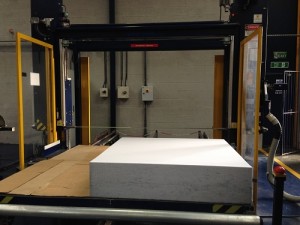Applications of Foam Conversion
The versatility of foam conversion leads to its extensive use across multiple industries. Some notable applications include:
1. Packaging

Foam conversion plays a vital role in the packaging industry, providing protective cushioning for delicate and valuable items during transit. Foam packaging solutions prevent damage and ensure products reach their destinations in pristine condition.
2. Automotive
In the automotive sector, foam conversion is employed to create comfortable and ergonomic seating, noise insulation, and impact-absorbing components. It also contributes to reducing the overall weight of vehicles, improving fuel efficiency.
3. Aerospace
Foam conversion is integral to the aerospace industry, where it helps in manufacturing lightweight and high-strength components for aircraft and spacecraft. Foam materials are used in insulation, vibration damping Foam Conversion, and aerodynamic applications.
4. Medical
In the medical field, foam conversion is utilized to produce orthopedic cushions, wound dressings, and other medical devices. The unique properties of foam make it suitable for patient comfort and support.
5. Furniture
Foam conversion finds extensive use in the furniture industry, where it provides comfort and support in mattresses, cushions, and upholstery. The ability to mold foam into different shapes allows for customizable and ergonomic furniture designs.
Advantages of Foam Conversion
Foam conversion offers numerous benefits, making it a preferred choice in various industries. Some of the key advantages include:
1. Lightweight
Foam products are inherently lightweight, making them ideal for applications where weight is a crucial factor, such as in aerospace and automotive industries.
2. Impact Absorption
Foam materials possess excellent impact absorption properties, safeguarding sensitive equipment and providing safety features in automotive applications.
3. Thermal Insulation
Foam conversion results in products with excellent thermal insulation properties, maintaining temperature stability in packaging and building applications.
4. Customization
The ability to mold foam into desired shapes and profiles allows for the creation of custom products tailored to specific needs.
5. Sound Damping
Foam materials effectively dampen sound vibrations, contributing to noise reduction in various applications.
FAQs (Frequently Asked Questions)
Is foam conversion limited to a specific type of foam?
Foam conversion is not restricted to a particular type of foam. It encompasses various materials such as polyurethane, polyethylene, and polystyrene, each suited for different applications.
How does foam conversion benefit the packaging industry?
Foam conversion provides protective cushioning to delicate items during transportation, preventing damage and ensuring safe delivery.
Can foam conversion improve fuel efficiency in vehicles?
Yes, foam conversion allows for the creation of lightweight components, contributing to improved fuel efficiency in vehicles.
What industries benefit from foam conversion the most?
Foam conversion finds applications in packaging, automotive, aerospace, medical, and furniture industries.
Is foam conversion eco-friendly?
Some foam materials used in conversion processes are recyclable and environmentally friendly, contributing to sustainability efforts.
How does foam conversion contribute to aerospace applications?
Foam conversion helps in manufacturing lightweight and high-strength components for aircraft and spacecraft, aiding in fuel efficiency and performance.
Conclusion
In conclusion, foam conversion is a versatile process with a wide range of applications across industries. Its ability to transform raw foam materials into functional and innovative products makes it a valuable technique for various sectors. From providing cushioning in packaging to enhancing comfort in furniture, foam conversion plays an integral role in modern manufacturing. Its lightweight nature, impact absorption capabilities, and thermal insulation properties further enhance its appeal. As industries continue to evolve, foam conversion will remain a crucial aspect of product development and innovation.
